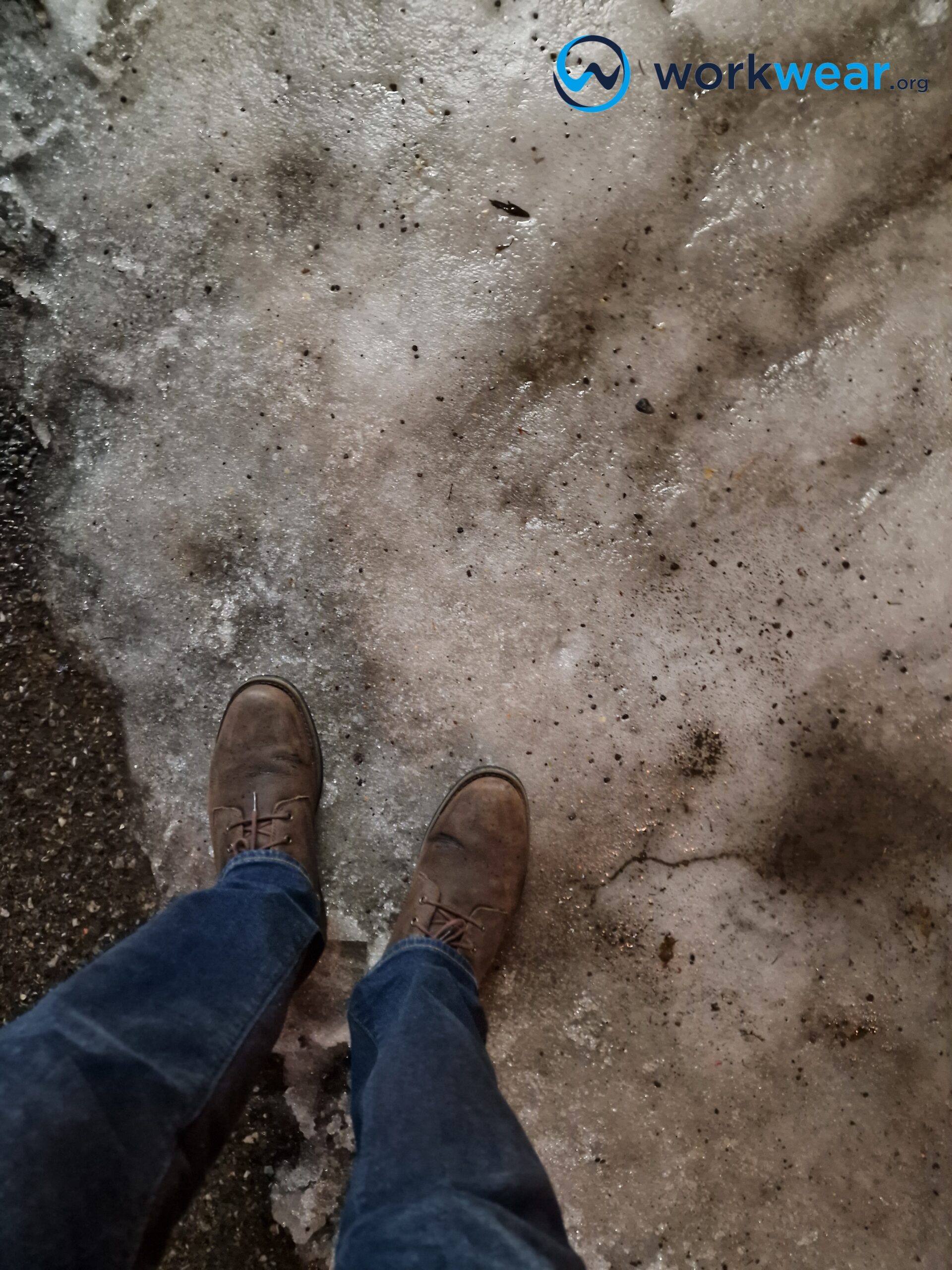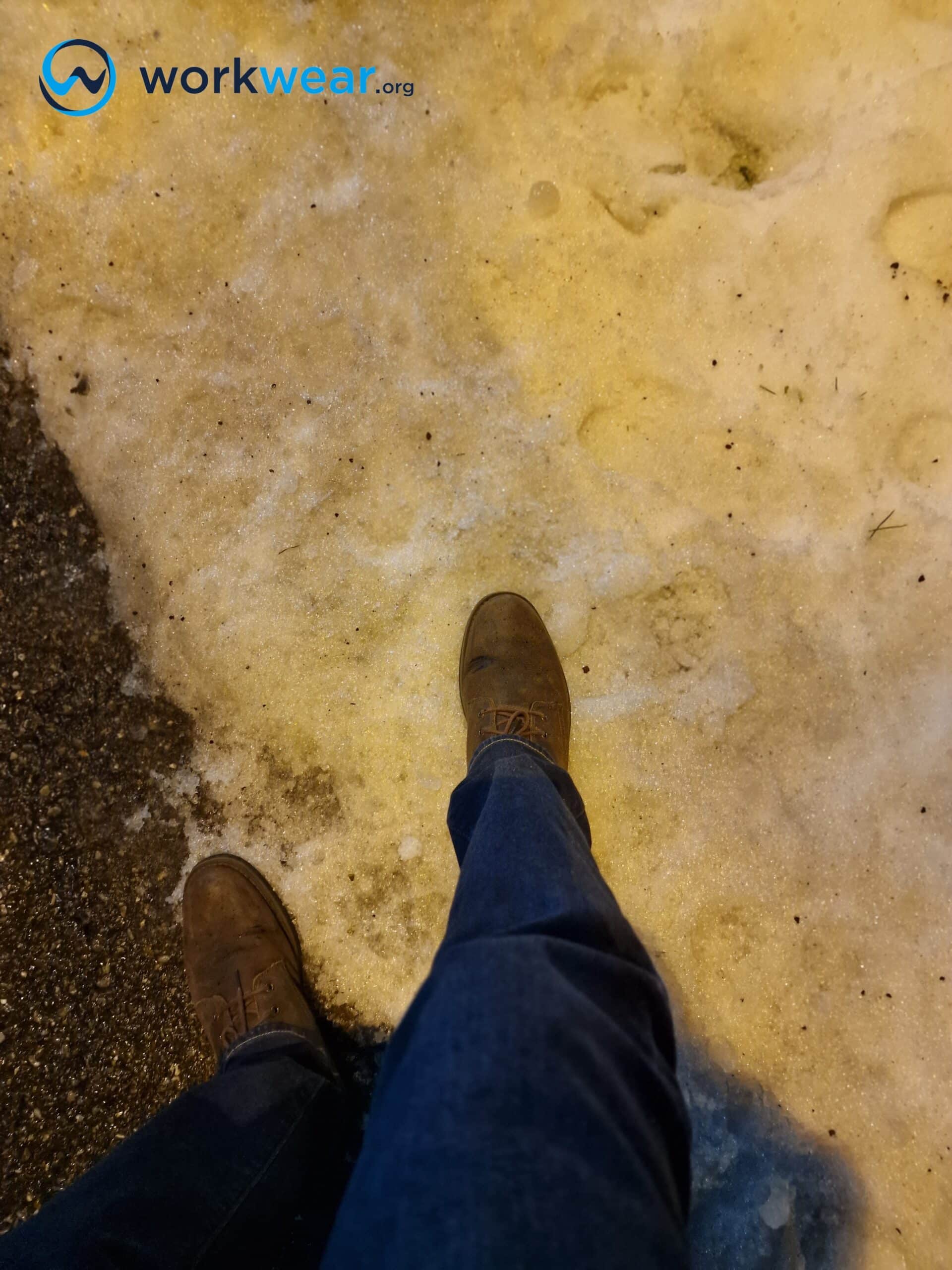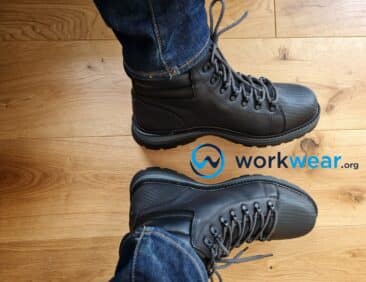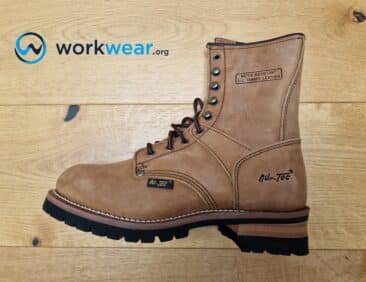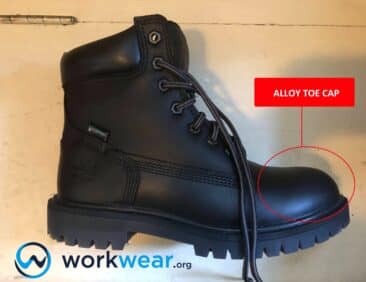Can You Wear Work Boots in Snow?
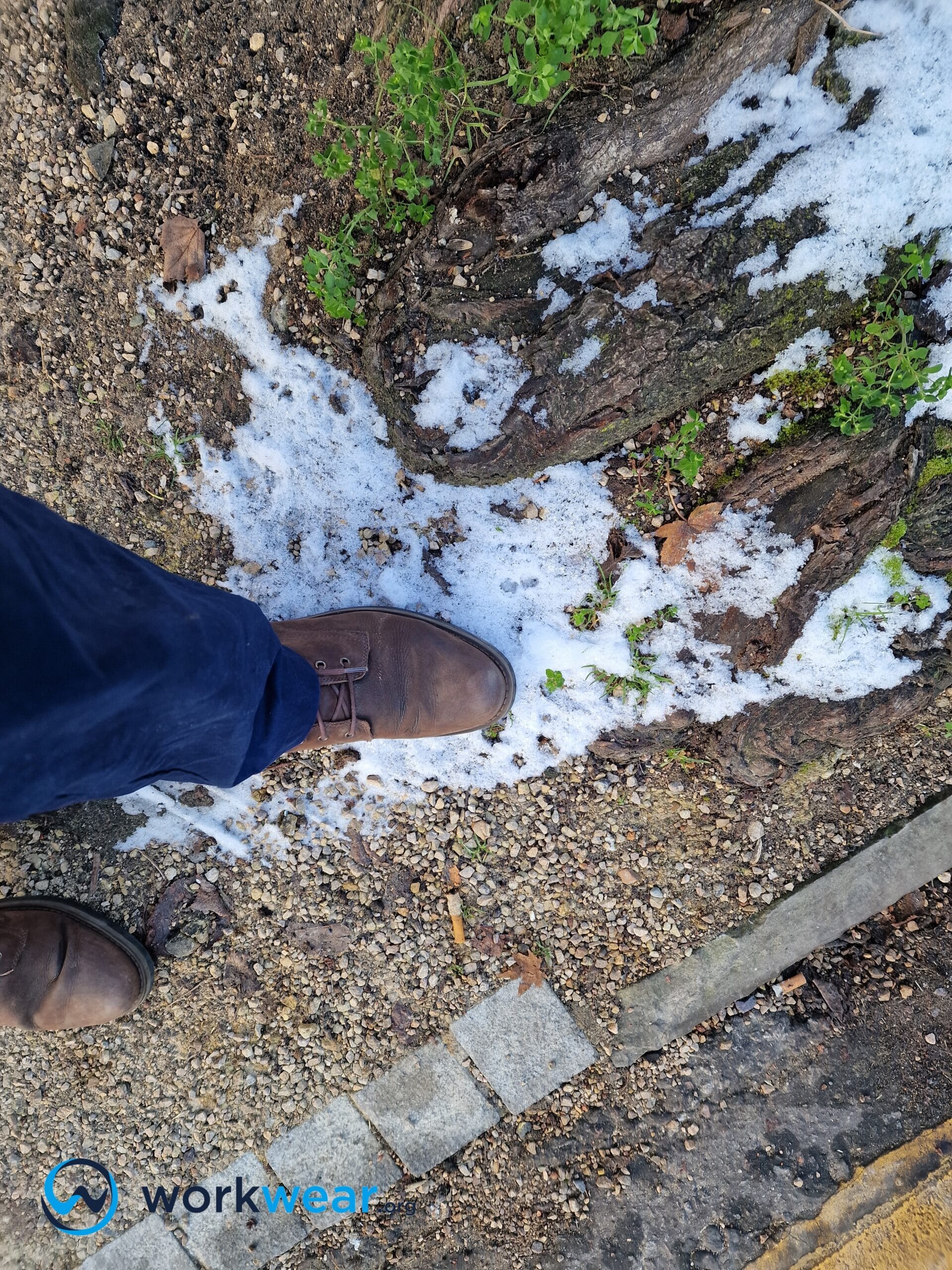
The right work boots will keep your feet protected and comfortable while you’re on the job. They bear your body’s weight and are exposed to the elements and other hazards that you may encounter in the workplace. Work boots generally have robust structures, so it’s easy to think they can take on even extreme conditions – even if they’re not specifically designed to do so.
However, work boots can get damaged and won’t be able to deliver the intended benefits if they’re used in inappropriate settings.
This article will focus on whether regular work boots in the snow are good and what qualities make snow boots better equipped for icy or snowy conditions.
Key Takeaways
- Work boots are sturdy enough to keep up with different work environments. Still, if they don’t have the appropriate features – such as those needed for working in the snow – they won’t be able to perform well nor provide the necessary foot protection and comfort.
- Work boots often showcase durable construction, strong liquid resistance, and grippy soles – qualities that make them suitable for working in snow for short periods.
- Yes, it’s okay to wear work boots in the snow, but only for short periods. If you need to work in snowy or icy conditions for longer stretches – such as weeks or months – we recommend that you wear snow boots instead for better functionality and protection.
- Compared to work boots, snow boots come with taller shafts that offer increased coverage against the elements and abrasion, provide better insulation as well as a higher level of traction, come with strong waterproofing, and can help extend the life of your regular work boots.
- It’s worth noting that snow boots generally have higher price points and tend to be heavier and bulkier than regular work boots.
Qualities of Work Boots That are Ideal for Snowy Conditions
Strong Construction
High-quality work boots are designed with robust structures that resist damage even with heavy use. They’re much stronger than your regular pair of stylish boots, delivering enhanced foot support and protection needed while on the job.
If you’re planning to use work boots in snowy conditions, make sure that the design and materials are strong enough not to easily break apart when exposed to extreme weather conditions and temperatures.
Work boots that aren’t strong enough, or those that have unsuitable styles or materials (such as non-waterproof structures with thin materials) won’t last long in challenging, snowy environments.
Exposure to extreme wetness for long periods will also affect their appearance, causing unsightly stains or spots and warping on the leather.
Strong Traction
Work boots are designed not only to protect the feet against safety hazards but are also built to help maintain secure footing.
High-traction outsoles play key roles in preventing slipping, which is a high risk in work areas where the floors are always wet (such as on snow or ice) or oily and in unstable ground conditions.
The outsoles of work boots strongly grip different surfaces, making it easier to walk safely and confidently without worrying that you won’t be able to stay upright in challenging surface conditions.
Waterproofing/Water Resistance
Working outdoors in winter will expose the work boots to cold weather and extreme wetness.
To ensure that your feet won’t become soaked while finishing the required tasks, you’ll need work boots made with waterproof materials or at least have strong water resistance.
Liquids can quickly seep into the boots without these qualities and cause great discomfort. Non-waterproof materials are also in danger of seriously deteriorating when they’re exposed to wet conditions, so there’s a risk that the boots will fall apart after being used in the snow.
Can You Wear Work Boots in Snow?
The simplest answer is yes – but it comes with a caveat.
It’s fine to use your regular work boots in the snow if you’re going to do so only for a few days or for short periods, such as when you need to work on certain chores for a few hours outdoors, and the area has snow.
In such cases, high-quality work boots can be worn safely in snowy environments. This is especially true if your work boots have all the features discussed above (strong traction, durability, waterproofing, and insulation).
However, if you work in a climate with a lot of ice or snow for many days or even months every year, we recommend getting snow boots instead.
These boots are designed to withstand the harsh conditions and low temperatures associated with outdoor winter settings, enabling you to continue working without worrying about your safety and comfort.
Key Advantages of Using Snow Boots Instead of Work Boots in Snow
Prevent Slipping on Ice
Work boots may come with strong traction, but more than this level of grip is needed to keep up with snowy or icy surfaces.
Snow boots come with treads designed to bite into icy conditions, helping you maintain your balanced gait while navigating tricky surfaces.
The soles of snow boots are often made with a rubber compound that’s far grippier than the material used for work boots’ outsoles. Their lug patterns are designed to deliver increased traction while preventing snow from building up on the soles simultaneously.
Better Insulation
Snow boots keep the feet warm and protected against frostbite, especially while walking or working for long hours in the snow. In addition, snow boots’ insulation level is enhanced compared to work boots, so it’s easier to maintain comfortably warm feet in challenging weather conditions.
Depending on the style, some snow boots offer insulation down to sub-freezing temperatures, making them ideal for prolonged use in icy or snowy environments. The most common insulation materials used in snow boots are made with synthetic fill since it continues to deliver superior insulation even when it gets wet – unlike down, which clumps up and becomes virtually useless with moisture. In addition, heavier and thicker insulation in snow boots generally offers a higher level of insulation. There are also snow boots with removable liners filled with wool and other materials for added warmth.
Enhanced Height/Coverage
Snow boots are typically taller compared to regular work boots.
This enhanced height protects the feet and calves against the elements and abrasive objects that can be encountered when working outdoors.
The tall shafts also offer better coverage to stop snow, ice, and water from entering the boots’ opening, especially when walking in deep snow. Snow boots that can be used for light hiking activities are available in 6- or 7-inch heights, while the ones that are more suitable for working in snow come in 10 to 11-inch-tall shafts.
Stronger Protection Against Wetness
All snow boots offer at least some sort of waterproofing or water resistance since they’re built to be worn in snowy, icy, or slushy conditions.
The strong waterproofing can be in the form of a waterproof outer shell, commonly seen in two-piece boots that also come with a removable inner liner that can be detached for quick drying after use. Waterproof membranes usually fitted into one-piece snow boots can also offer protection. Snow boots are built to resist water penetration when exposed to a larger volume of liquids, such as melted snow or ice.
Extends the Life of Work Boots
Using snow boots during winter will help prolong the life of your work boots.
Giving your trusted pair of work boots a rest period in winter – when they’re not suitable for use – will help preserve their appearance and function.
Work boots can maintain their high-quality aesthetics and perform much better for longer if they’re not exposed to harsh temperatures and conditions when working in the snow.
Key Disadvantages of Using Snow Boots Instead of Work Boots in Snow
More expensive
Snow boots can be more expensive than regular work boots.
This is especially true for snow boots that come with top-quality insulation and other enhanced features, making them completely ready to take on challenging outdoor conditions in winter.
Exceptions to this may be work boots built with even more safety and comfort enhancements, including exclusive technology and proprietary materials.
Can be heavier/bulkier
Taller styles of snow boots tend to feel heavier compared to regular work boots with shorter shaft heights. Meanwhile, snow boots with superior insulation can feel a lot bulkier than the average pair of work boots.
The additional weight and bulk can hurt comfort and mobility, especially if the wearer isn’t used to the enhanced structure.
Pros
- The stronger grip on ice and snow
- Better insulation/warmth
- Tall height offers enhanced coverage
- Stronger waterproofing/water resistance
- Prolongs the life of regular work boots
Cons
- Generally, it costs more than work boots
- Can be heavier/bulkier
Conclusion
Work boots generally come in strong, durable construction, but if their designs are not suitable for the work environment, they won’t be able to perform at a superior level. An example of this is when regular work boots are used in snow. It’s fine to do this for short periods (such as a few hours a day for just a few days), but we recommend using snow boots if you need to work in icy or snowy conditions for long periods that span weeks or months in a year. High-quality work boots typically have strong traction, good water resistance, and durable designs that make them ideal for short-term use in snow. In addition, snow boots are better equipped to tackle the challenges of working and walking around snowy outdoor conditions. Compared to normal work boots, snow boots are much grippier on ice and snow, deliver better insulation, have tall heights for increased coverage, offer stronger waterproofing to handle exposure to more liquids, and help prolong the life of regular work boots. However, snow boots are also more expensive and tend to be bulkier than work boots.
FAQs
- Are all insulated work boots suitable for use in the snow?
- Insulated work boots must also be waterproof to be safe enough to be used in snowy or icy conditions. Otherwise, the slush or water can easily seep into the boots and cause uncomfortable wetness – even with the built-in insulation.
- Aside from stronger traction, what makes snow boots’ outsoles better than work boots?
- The outsoles of snow boots are made with rubber compounds that don’t harden when exposed to low temperatures. This enables the soles to retain their flexibility even after exposure to ice or snow, making it easier to walk comfortably since the soles don’t become too rigid with the cold.
- Do waterproof work boots and snow boots offer the same level of water resistance?
- Generally, snow boots provide a stronger level of protection against liquid penetration since they’re designed to be used around ice or snow – which can easily melt and cause severe wetness.
- Aside from preventing liquids from getting in, what’s the advantage of snow boots’ tall height?
- The extended height of snow boots also traps much-needed heat inside, preserving the comfortably warm feeling while working in extremely cold environments.
